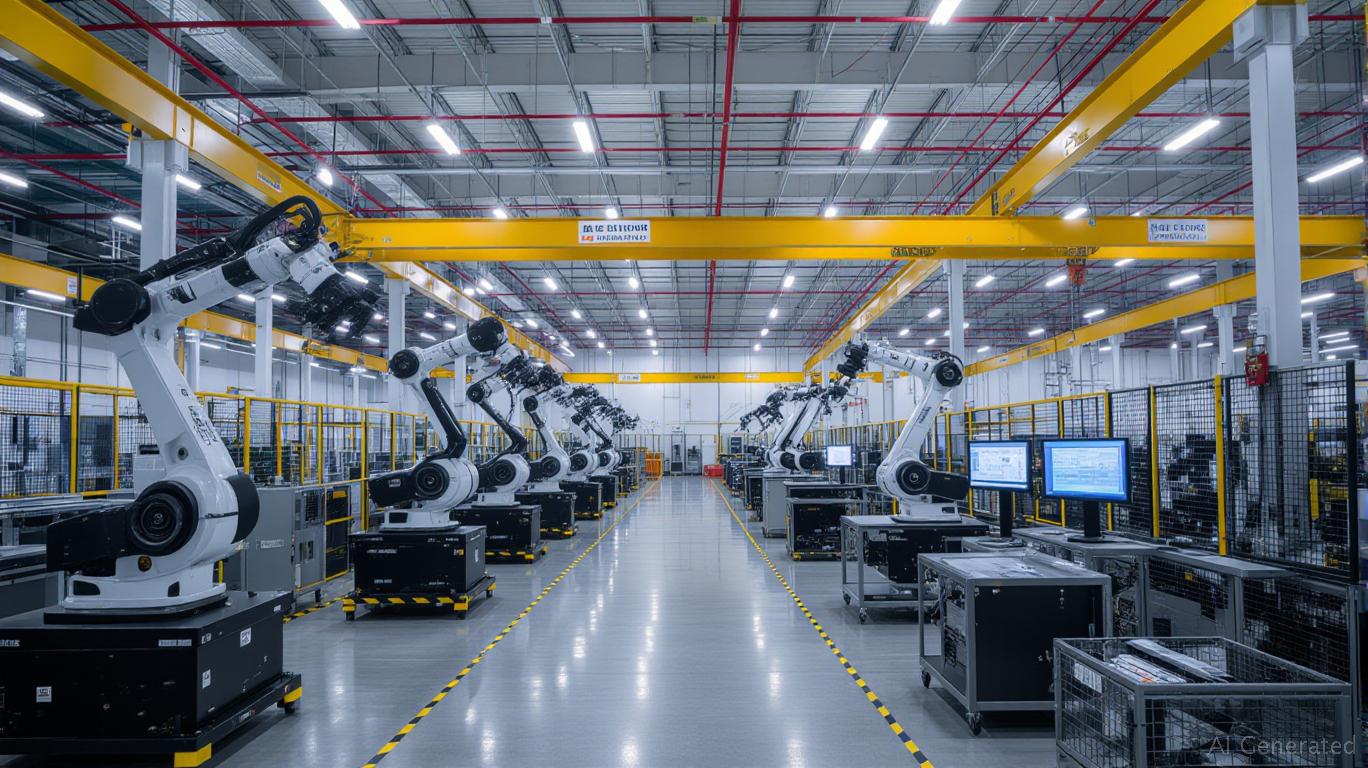U.S. Manufacturing's Tech-Driven Resilience: Navigating Tariffs Through Automation and AI
The U.S. manufacturing sector is at a crossroads. While tariffs and geopolitical tensions have strained global supply chains, a new wave of innovation—driven by artificial intelligence (AI) and automation—is transforming the industry's ability to adapt. Companies are leveraging cutting-edge technologies to offset tariff costs, restructure supply chains, and position themselves for long-term growth. This article explores the opportunities emerging in sectors like automotive, electronics, and industrial machinery, while highlighting key companies and data-backed strategies for investors.

The Tariff-Resilience Paradox: Challenges and Opportunities
Recent tariffs on imports from China, Mexico, and Canada have raised production costs for sectors reliant on imported components. For instance, automotive manufacturers face a 25% tariff on Mexican-made cars, while electronics companies grapple with up to 40% price hikes on Chinese semiconductors. These pressures have forced firms to rethink their supply chains, creating openings for those investing in automation and AI.
Agilent's 31% productivity boost from AI-driven testing and its "lights-out factory" exemplify how automation can offset cost increases. Its stock has outperformed the broader market by 20% since 2021, reflecting investor confidence in its tech-driven strategy.
AI as the Catalyst for Supply Chain Resilience
AI is no longer optional—it's a survival tool. Here's how it's reshaping the industry:
1. Predictive Analytics for Tariff Volatility
Platforms like papAI use machine learning to simulate tariff scenarios, enabling companies to adjust sourcing strategies in real time. For example, an electronics firm might shift production to Mexico (avoiding U.S. tariffs on Chinese imports) or stockpile components before new levies take effect. This proactive approach reduces inventory costs and mitigates disruptions.
2. Real-Time Supply Chain Monitoring
AI-powered systems track geopolitical risks, supplier performance, and logistics bottlenecks. A semiconductor manufacturer could use satellite imagery and news sentiment analysis to predict disruptions in Southeast Asia, rerouting shipments to avoid delays.
3. Inventory Optimization
AI-driven demand forecasting helps companies balance stockpiling and just-in-time delivery. Consider an automaker preparing for a 15% steel tariff hike: AI models might recommend holding a 6-week supply of critical parts while diversifying suppliers in Mexico and Canada.
Sector-Specific Investment Opportunities
Automotive: Reshoring Meets Robotics
The automotive sector is a prime example of resilience through tech investment. Companies like Honda and Volvo are reshoring production to the U.S. to bypass tariffs:- Honda's $21 billion investment in U.S. plants includes AI-integrated robotics for battery production.- Volvo's South Carolina facility now assembles the XC90 SUV using AI-driven quality control, reducing defects by 40%.
Employment in automotive manufacturing has risen 8% since 2020, aligning with reshoring trends. Investors should prioritize firms with U.S. production footprints and automation partnerships.
Electronics: The Race for Domestic Semiconductor Capacity
The CHIPS and Science Act ($52.7B in subsidies) is accelerating semiconductor manufacturing in the U.S. Key players include:- Intel (INTC): Investing $20B in U.S. chip plants to reduce reliance on Asian suppliers.- Applied Materials (AMAT): Providing AI-enabled tools for semiconductor fabrication.
Industrial Machinery: AI in Logistics and Sustainability
Companies like Caterpillar (CAT) are integrating AI into logistics to optimize global shipping routes and reduce fuel costs. Meanwhile, AI-driven predictive maintenance cuts downtime, a critical factor in margin-sensitive industries.
Key Companies to Watch
- Agilent Technologies (A): Pioneering AI in testing and quality control, with a 53% reduction in waste.
- papAI: A supply chain analytics firm enabling real-time tariff risk modeling (though private, its clients include Fortune 500 manufacturers).
- General Motors (GM): Shifting EV production to U.S. factories to avoid Mexican tariffs on batteries.
- Rockwell Automation (ROK): Providing AI-driven factory automation solutions to automotive and industrial clients.
Investment Thesis and Risks
Buy Signal: Invest in companies with:- Established AI partnerships (e.g., Rockwell's collaboration with Microsoft's Azure AI).- U.S. reshoring initiatives (e.g., Honda's battery plant).- Exposure to the $32.58B cognitive supply chain market (16.7% CAGR through 2032).
Risks:
- Labor shortages in skilled roles (projected 1.9M unfilled manufacturing jobs by 2034).- Geopolitical volatility (e.g., China's retaliatory tariffs on U.S. exports).
Conclusion: The New Manufacturing Playbook
U.S. manufacturing is evolving from a cost-driven industry to a tech-driven one. Investors should focus on firms leveraging AI for supply chain agility and reshoring to offset tariffs. Sectors like automotive and semiconductors offer the strongest near-term opportunities, while long-term bets on AI infrastructure (e.g., data centers for generative AI) will underpin resilience. As the cognitive supply chain market booms, early adopters are poised to outperform—making this a critical sector for portfolios seeking innovation-driven growth.

Comments
No comments yet